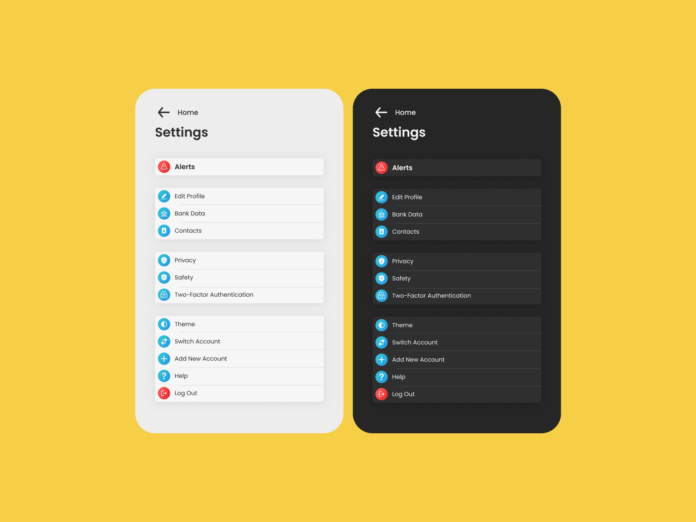
Eleanor Hecks – August 13, 2024
Collected at: https://www.iotforall.com/7-best-practices-when-designing-inclusive-ui-for-iot-devices
Millions of people worldwide live with some form of disability — and like the average person — they use smart devices to make every aspect of their lives easier. IoT (Internet of Things) products help people overcome daily obstacles. Yet, when utilizing software to control these devices, they must be accessible for everyone to use.
Making a smart device’s user interface (UI) inclusive allows companies to create better products. Additionally, it opens an opportunity for a wider audience to use.
What Is Inclusive UI Design?
Inclusive design is an approach designers take when creating products and services to ensure they are accessible to everyone, including those with disabilities. Approximately 16 percent of people worldwide live with a type of disability, and inclusive design considers their and everyone else’s needs from the outset.
Inclusive design matters because it ensures the technology is accessible to all. By prioritizing inclusivity, designers can enhance user experience in IoT devices and achieve greater user satisfaction.
Understanding Accessibility Standards
In inclusive design, IoT designers must embrace accessibility standards, as they have become integral to designing for inclusion. Creating products with accessibility in mind follows the rules Web Content Accessibility Guidelines (WCAG) puts into place.
WCAG provides criteria for making web content accessible, covering text alternatives, keyboard accessibility, and readability. Adhering to these guidelines is key to creating inclusive digital experiences that accommodate all users.
The Department of Justice also requires all businesses to follow the Americans with Disabilities Act (ADA). The ADA sets the standards for accessible design with Title II and Title III regulations. These regulations mandate that digital and physical environments be accessible to people with disabilities. When businesses fail to meet these standards, they risk legal action.
The number of claims against businesses violating the ADA Title III for website accessibility grows yearly, with more than 4,000 lawsuits filed in 2021. Thus, it is vital to integrate accessibility principles into IoT design to avoid legal issues.
Best Practices in Designing Inclusive UI for IoT Devices
Designers can follow several best practices when incorporating inclusive UI for IoT devices.
#1: Include Multiple Input Options
IoT interfaces should incorporate various input options and allow users to customize their control settings. This means providing numerous ways for users to interact with devices, such as voice commands, touch interfaces, and physical buttons.
Users should also be able to tailor their devices to their specific needs, allowing them to interact with the smart device’s UI to the fullest.
Simplicity is key in all designs, regardless of the device or platform. However, it is especially critical in IoT devices because they aim to simplify users’ lives. Think of easy navigation and minimal layouts.
#2: Employ a Simple and Clear Design
The UI should have clear labels, intuitive icons, and consistency in design components. When designers incorporate all of these, users can easily understand how to operate their devices.
#3: Implement Universal Design Principles
Universal design focuses on creating products that are accessible to people with all abilities and disabilities. The principles consider various aspects such as equitable use, simple and intuitive operation, flexibility in use, and much more.
Take time to understand these principles and integrate them into the process. Doing so ensures the IoT device caters to a diverse user base, enhancing usability and inclusivity.
#4: Provide Text Alternative
Text alternatives convey information through images, icons, and other non-text elements. They are especially important for users who rely on screen readers and other assistive technologies.
For example, a smart home thermostat can provide text descriptions for its temperature icons and settings. This allows users with visual impairments to receive the same information through auditory formats, ensuring they can fully utilize the device’s features.
#5: Consider Accessible Visual Design
Inclusive design considers all visual elements of the UI. When thinking about accessibility for all, designers should keep a few visual aspects in mind. This includes using high color contrast to make text and other elements legible. It also involves choosing readable fonts and providing options to adjust text size.
Additionally, avoiding relying solely on color to convey information is important. Instead, use patterns, textures, or labels to differentiate various UI parts.
#6: Provide Audio Feedback
Audio cues guide users through device interactions, confirm actions, and alert them to important changes or errors. Providing this type of feedback is essential to ensure users receive clear indications of their actions.
For example, a wearable device can provide auditory feedback to help those with motor impairments. Studies have shown that smart devices with musical components have improved the balance of users with Parkinson’s disease by detecting their movement and gait.
This feedback is also beneficial for those with visual impairments. However, users may want to adjust the volume and tone of their device, so offering adjustable settings makes for a more inclusive experience.
#7: Design Interfaces with Contextual Awareness
User interfaces should be able to adapt to the user’s environment and the context of use. This feature enables devices to recognize and respond to various scenarios, so including contextual awareness is necessary.
By incorporating this design aspect, the device’s display can adjust to different lighting conditions. It may also modify interactions based on the user’s current activity. For instance, the device may automatically switch to dark mode in the evening. Features like this are crucial, ensuring a more intuitive user experience.
Prioritizing Inclusivity in IoT Design
Designing inclusive IoT devices is a matter of committing to creating products that service all users equitably. When designers consider the various best practices, they create truly accessible devices.
However, the key to successful inclusive design is continuous feedback. Keep making improvements based on the information the user base provides — this will ensure every IoT device adapts to diverse needs.

Leave a Reply